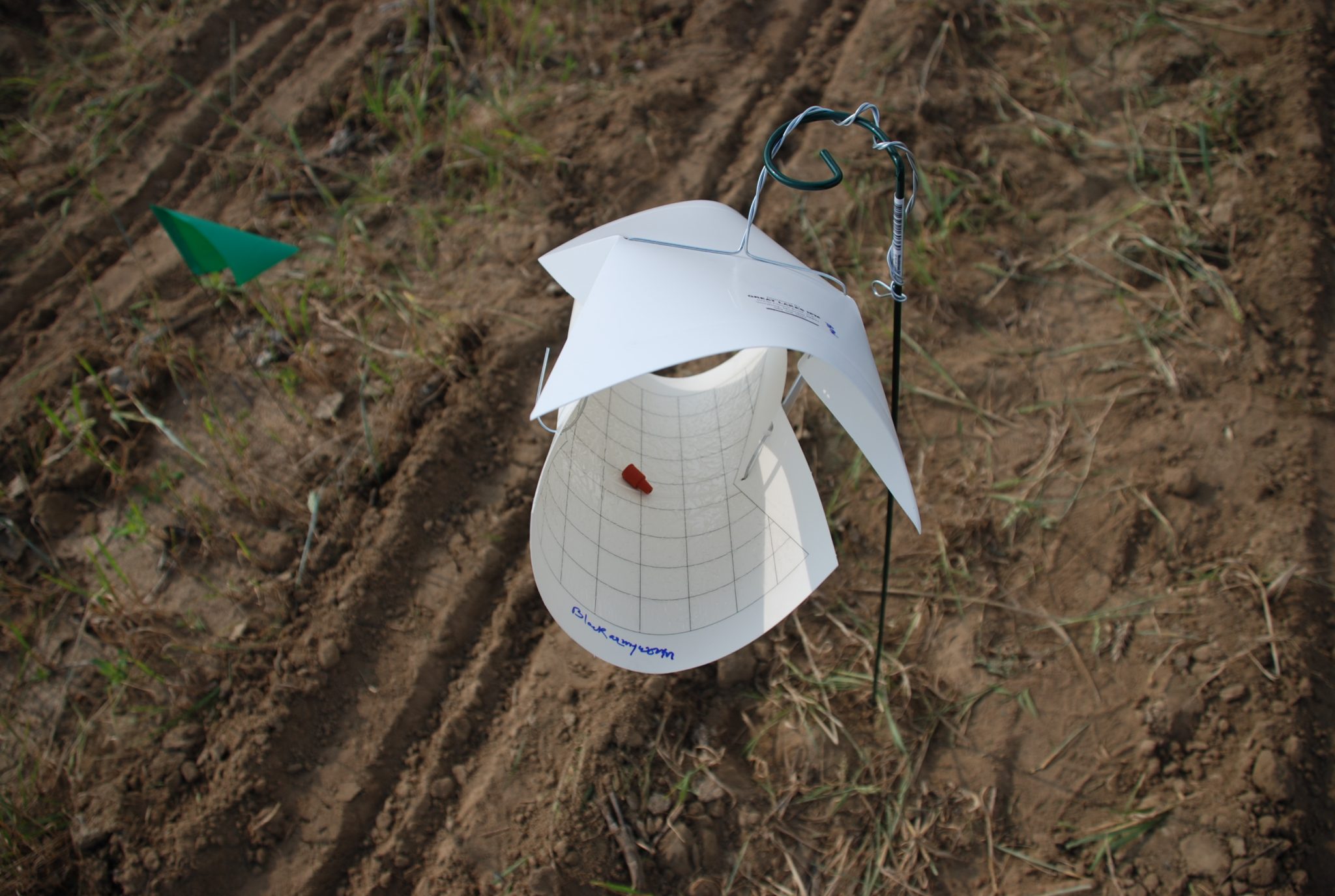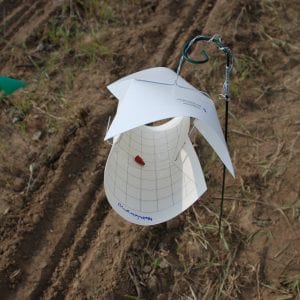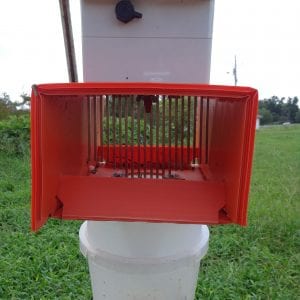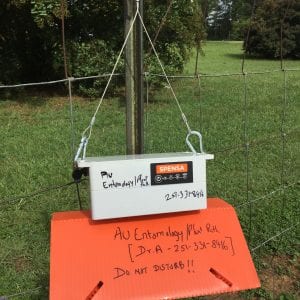Farming

Monitoring and identifying pests are critical steps in a successful integrated pest management (IPM) program. Z-traps and Smart Traps now offer a continuous insect-counting system for specialty crop producers and crop advisors as decision-making tools.
Monitoring and identifying pests are critical steps in a successful integrated pest management (IPM) program. Traditionally, insect monitoring is a labor-intensive process with daily or weekly checks followed by manual entry of population data into spreadsheets. Typically, sticky wing (figure 1) or other traps designed specifically for a target insect are used for season-long monitoring. Z-traps and Smart Traps developed by DTN (formerly Spensa Technologies) now offer a continuous insect- counting system for specialty crop producers and crop advisors as decision-making tools. Check with the manufacturer regarding the availability and subscription cost of the automatic devices.
- Figure 1. Sticky wing trap.
- Figure 2. Z-trap.
- Figure 3. Smart Trap (camera trap)
What Are Z-traps?
Z-traps (figure 2) were the first widely available automatic traps to include a cellular communication unit integrated with bioimpedance sensors to detect insects. Z-traps fitted with pheromone lures have metal zapper rods inside the plastic hut that shock the moths, killing them in the process. The Z-trap has a plastic bucket that collects a large number of moths. Z-traps automatically send the count data once every 24 hours to the DTN software for retrieval and use on a daily or weekly basis.
What Are Smart Traps?
DTN Smart Traps (figure 3), introduced first in 2018, are sticky traps with a top-mounted camera that automatically sends counts and pictures to the DTN software. These traps use 7- by 7-inch sticky inserts manufactured by Alpha Scents placed under the camera. Traditional sticky wing traps use 7.5- by 9-inch sticky bottoms.
Automatic Traps Versus Traditional Traps
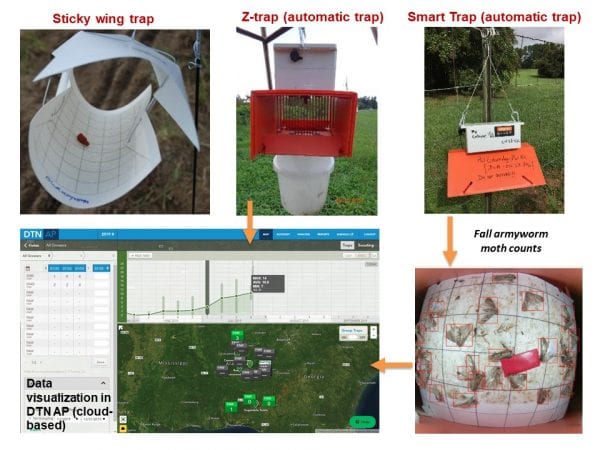
Figure 4. Automatic insect traps
In 2017 and 2018, automatic traps and traditional sticky wing traps were compared at the Auburn University Crops Garden in Auburn, Alabama, because this location has diverse field and horticultural crops grown nearby. Trap comparison data from 3 years of research indicate the following:
- Photograph quality of Smart Traps is outstanding as are accurate counts for various moth species. Photos allow easy verification of total numbers in a trapping period. DTN software is a very useful interface for archiving trap data from multiple locations.
- The number of moths in a trap is related to the trap type and the size of the moth. Moth numbers relate to the potential risk to the crop from multigenerational caterpillars. For example, sticky wing traps with a wide bottom capture a larger number of small moths such as lesser cornstalk borer (LCB) compared to Smart Traps that have a small sticky bottom. Z-traps with a collection bucket are very effective at trapping large moths such as fall armyworm (FAW) and tobacco budworm (TBW).
- Automatic traps are reliable in showing changes in pest activity over a long season and have very good battery life. The DTN software dashboard shows signal strength and battery life along with recorded data in an easy format for viewing on a computer screen or smartphone.
- Smart Trap cameras and software work well to count insects and archive information for later use. Smart Traps, however, should be checked often during peak moth activity because the trap bottom may fill up quickly.
- Z-traps are useful for collecting a large number of moths in the bucket; however, plant debris and other material can trigger false readings. Check the condition of all automated traps after heavy rainfall or storm events.
- While the traps are useful for measuring pest activity, none of the traps can predict the actual caterpillar load on various crops. Moth activity seems to decrease in years with heavy rainfall, and that may affect caterpillar pressure. Producers must directly check crops and act promptly to protect yield.
- All traps must be checked after severe weather such as heavy rainfall and hurricanes. Automatic traps are more expensive than traditional traps, but they can be cost-effective investments for large farms. Automatic trap data can be integrated with weather conditions, soil maps, and other resources for precision agriculture.
For more information about pest monitoring and scouting practices, visit Alabama Extension IPM and contact your commercial horticulture regional Extension agent. Subscribe to the IPM newsletter for timely pest alerts at Alabama IPM Communicator Newsletter.
Download a PDF of Modern Insect Pest Monitoring Using Automatic Traps, ANR-2724.


